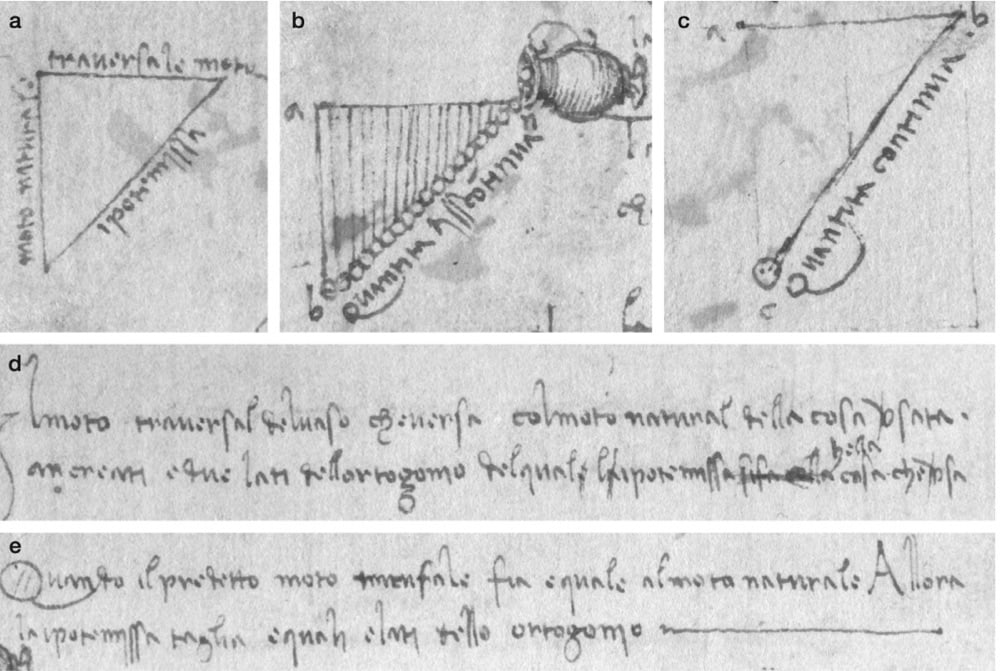Leonardo da Vinci’s Surprisingly Accurate Experiments with Gravity

This is super-interesting: in papers written by Leonardo da Vinci collected in the Codex Arundel, he documents experiments that show that gravity is a form of acceleration and also calculated the gravitational constant to within 97% accuracy, hundreds of years before Newton formalized gravity in theory.
In an article published in the journal Leonardo, the researchers draw upon a fresh look at one of da Vinci’s notebooks to show that the famed polymath had devised experiments to demonstrate that gravity is a form of acceleration — and that he further modeled the gravitational constant to around 97 percent accuracy.
Da Vinci, who lived from 1452 to 1519, was well ahead of the curve in exploring these concepts. It wasn’t until 1604 that Galileo Galilei would theorize that the distance covered by a falling object was proportional to the square of time elapsed and not until the late 17th century that Sir Isaac Newton would expand on that to develop a law of universal gravitation, describing how objects are attracted to one another. Da Vinci’s primary hurdle was being limited by the tools at his disposal. For example, he lacked a means of precisely measuring time as objects fell.
As the piece notes, Leonardo didn’t get things exactly right:
Da Vinci sought to mathematically describe that acceleration. It is here, according to the study’s authors, that he didn’t quite hit the mark. To explore da Vinci’s process, the team used computer modeling to run his water vase experiment. Doing so yielded da Vinci’s error.
“What we saw is that Leonardo wrestled with this, but he modeled it as the falling object’s distance was proportional to 2 to the t power [with t representing time] instead proportional to t squared,” Roh says. “It’s wrong, but we later found out that he used this sort of wrong equation in the correct way.” In his notes, da Vinci illustrated an object falling for up to four intervals of time-a period through which graphs of both types of equations line up closely.
But it’s still pretty impressive how far he did get. The piece also notes that this work was discovered because the codex was made available online to the general public, demonstrating the value of easy access of materials like this.





Stay Connected